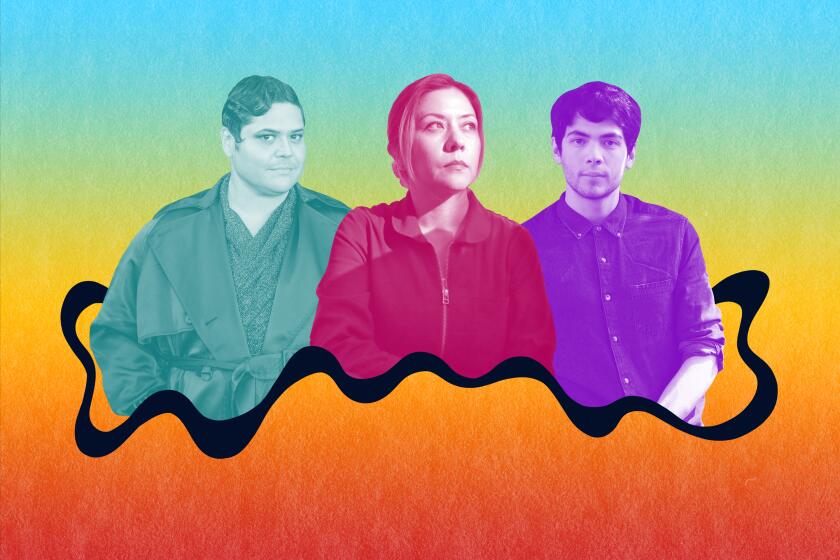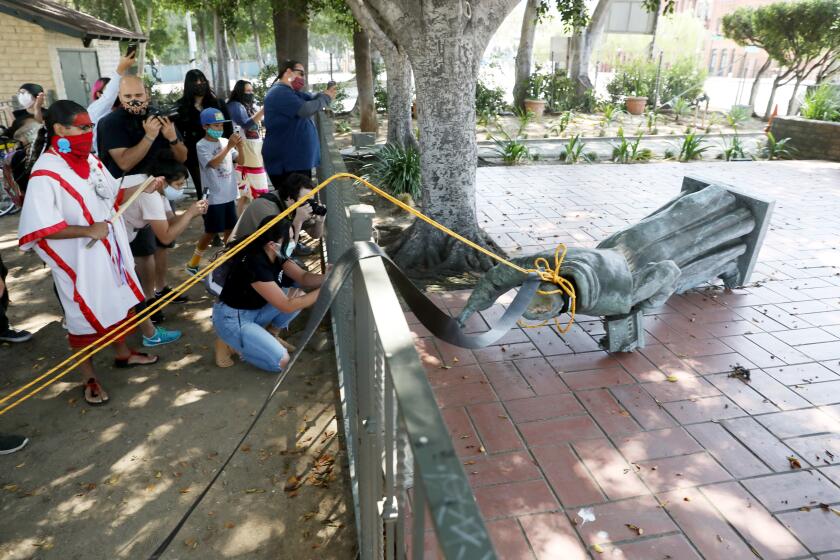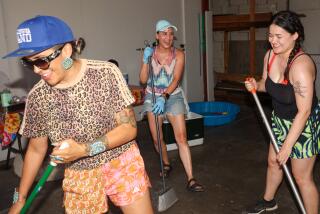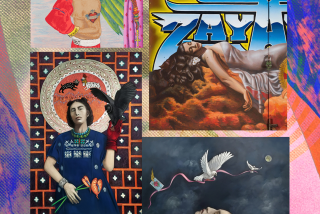As statues of oppressors toppled around L.A., Meztli Projects emerged to uplift Indigenous artists
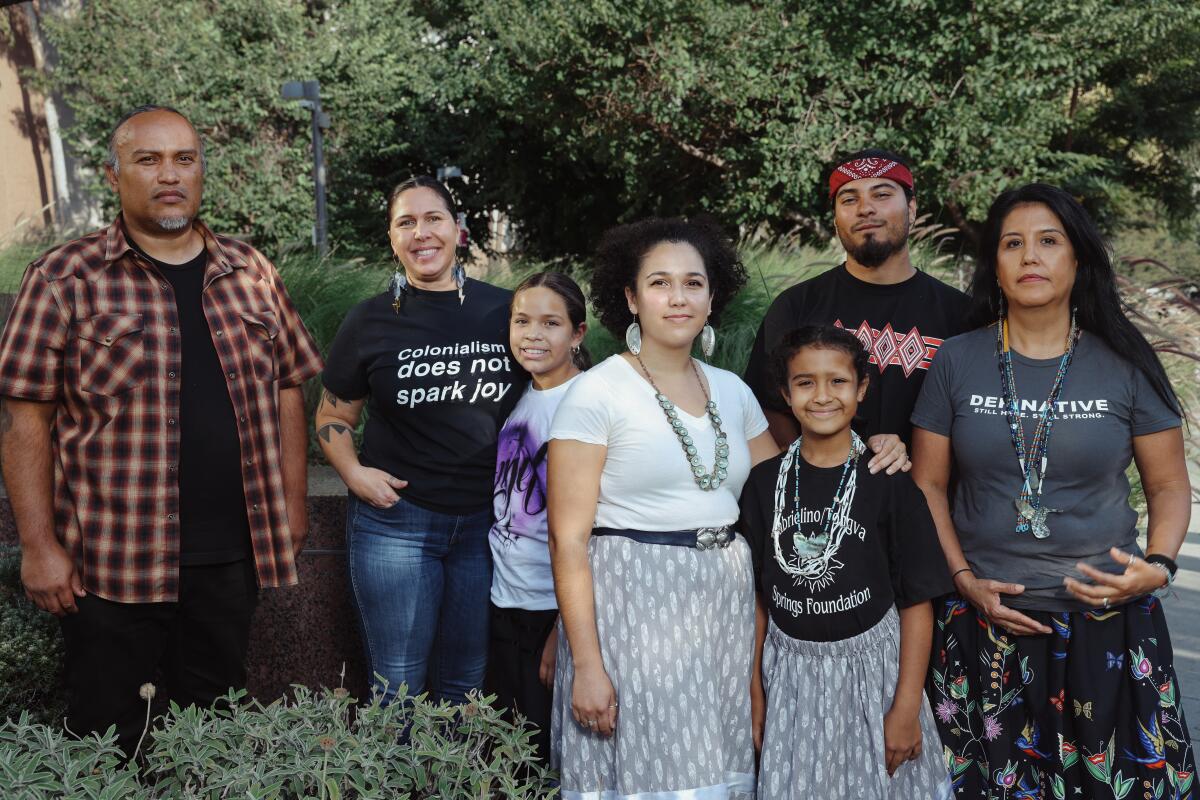
In 2020, Confederate and Christopher Columbus statues across the United States began toppling, in large part catalyzed by protests against the murder of George Floyd.
The Los Angeles-based arts and culture collaborative Meztli Projects was ahead of the curve. Huichol organizer and artist Joel Garcia, the organization’s project director and program co-creative director, had long bristled at the presence of the Columbus statue in Grand Park. At the time, he worked as co-director of Self Help Graphics & Art, focusing on programming and operations, helming initiatives like the Know Your Rights workshops, which distributed posters with information about what to do in the event of an ICE raid. In 2017, Garcia coordinated with Taino artist Tanya Melendez to turn the Columbus statue into an altar for the victims of Hurricane Maria.
Garcia says that a lot of his efforts at Self Help Graphics were about working to “help folks understand the complexities around Indigenous identity.” But in working with fellow Native and Indigenous artists and cultural producers, Garcia started to see the ways in which a non-hierarchical group could make an impact across the city.
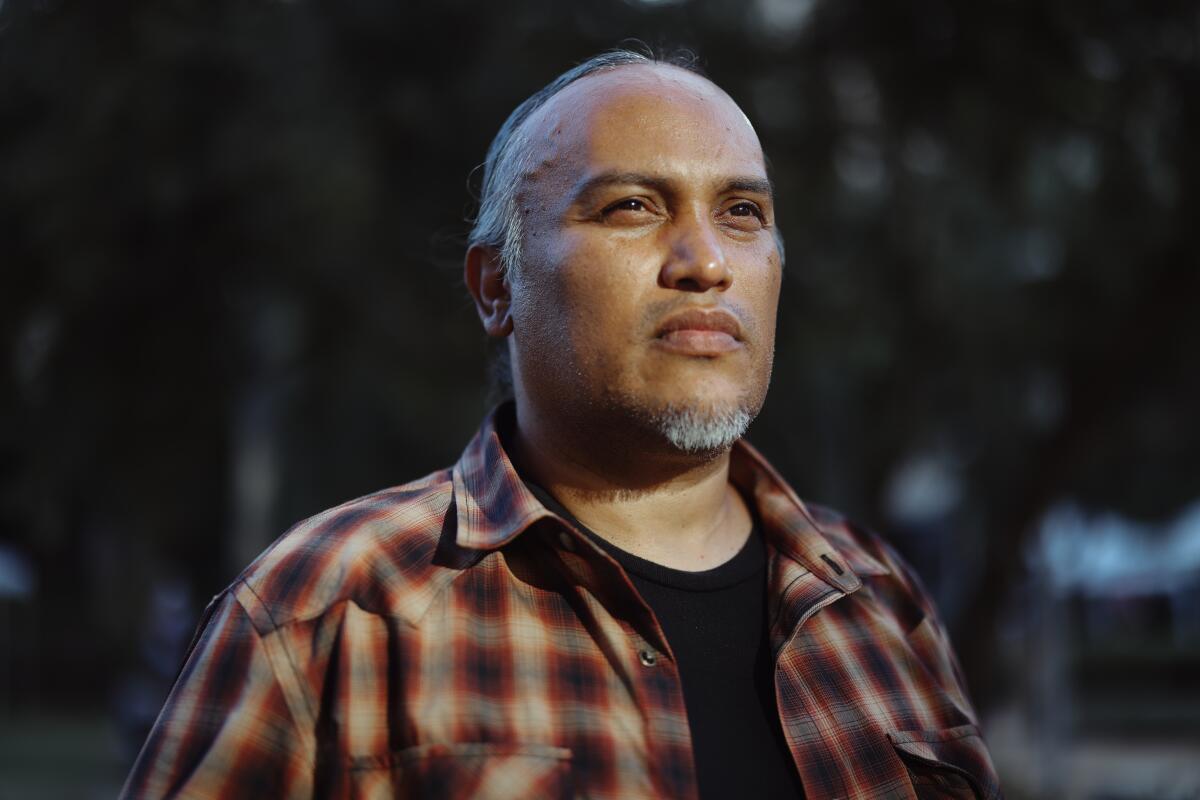
Garcia’s work, both as an arts professional and an artist, sparked the beginnings of Meztli Projects in 2018. Once Garcia left his post at Self Help Graphics & Art, the start of a new chapter began. Meztli Projects is a Native and Indigenous-focused group that focuses on “centering Indigeneity into the creative practice of Los Angeles,” as its website states. One of the group’s first public activations involved organizing an event centered on the 2018 removal of that same Columbus statue.
What histories are we not honoring? Artists, architects and historians give their ideas for new monuments across the country.
For Meztli Projects, the day wasn’t just about the statue coming down, it was also about creating a space for Native and Indigenous community members to come together. Each member of the collective works across varied artistic mediums and comes from different academic backgrounds. Projects under the Meztli umbrella include public art, workshops, online educational resources, mentorship and more.
The group’s members are also practicing artists, something that’s important to Garcia and a big part of the collective’s mentorship focus. Tongva and Mexican artist River Tikwi Garza met Joel in his early 20s, when he displayed work at Self Help Graphics & Art. He’s now an artist and cultural worker apprentice for Meztli. “It was very foundational for me, working with Joel and connecting with all kinds of people who are about this type of work,” Garza says.
Meet the inaugural LA Vanguardia class, talented Latinos defining the cultural landscape of L.A. and beyond.
Many of Meztli’s activations require behind-the-scenes conversations with elders and community members. The group hopes to raise funds to support elder artists so that they might focus on their work more than “being an elder as the cultural sustainer of all these other things that tribal communities have to sustain,” Garcia says.
This same ethos extends to members like River, who recently completed a residency with the Los Angeles Public Library and currently has work on view at the Catalina Museum for Art & History’s exhibition “Crossing Waters: Contemporary Tongva Artists Carrying Pimugna.”
For the record:
11:46 a.m. Nov. 4, 2022A previous version of this story referred to Monument Lab as Monumental Lab.
Garcia also continues his practice. In 2021, he did a residency through Oxy Arts and Monument Lab, along with three other artists, to create a virtual monument. He chose the former location of a Junipero Serra statue on Olvera Street, which was toppled in 2020.
Junipero Serra was declared a saint in 2015. But his role in California’s colonization via the mission system makes him a target for statue toppling.
“We hope that through their own creative practice, they’re able to access these opportunities,” Garcia says. “That through developing this way of doing this work — very slow, very gradual, very organic, very thoughtful, never alone, always in consultation with elders and other community members — that then that later leads to opportunities such as the ones that River is participating in.”
Program Co-Creative Director and mentor Kimberly Robertson, a Mvskoke artist and professor, says, “There are very few creative spaces for Native folks in Los Angeles to begin with, just plain and simply.” For her, one of the biggest challenges has been looking for opportunities and spaces that can allow her to show up fully, particularly as a mother. Robertson began incorporating funding into workshops for child or dependent care, as well as activities that younger members could do alongside adult artists.
The group’s intergenerational approach is another strong thread woven through every project. Robertson’s two kids actively participate in the group. One of them, when she was about 8 or 9, asked to develop a series of workshops for her own age group after seeing her older sister take part. The team paid her to plan the program.
“But that is not something that we developed,” Garcia clarifies. “This is very much how Indigenous peoples work everywhere.”
Meztli Projects hosted a plant dye workshop at the Getty on Oct. 15. Cultural educator Abe Sanchez shared knowledge on traditional California foods, and poet-songwriter Kelly Caballero performed. These events are part of the group’s efforts to bring together the Indigenous and Native communities throughout L.A. and to make their presence seen and heard by everyone else.
“The fundamental thing that is holding everything together is how you care for people — through creating,” Garcia says.
More to Read
The biggest entertainment stories
Get our big stories about Hollywood, film, television, music, arts, culture and more right in your inbox as soon as they publish.
You may occasionally receive promotional content from the Los Angeles Times.
